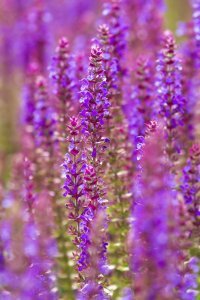Yesterday I was amputating their little arms; Into a bag they went. If I worked fast, I could fill the bag in the hour. Delicate soft green nubs at the end of each branch were quickly added up in my Ziploc baggie.
This micro-pruning of sorts was my first foray into spruce tip harvesting, among the early growth of a Whitehorse spring. This week there is so much more growing below those trees — so much more that is important.

Have you seen the lupin?
It’s on the front cover of Common Yukon Roadside Flowers available online, or at the Department of Environment. The guide is a great colour-coded resource to begin learning about the world at your feet.
From this 36 page booklet I see that the lupin was once thought to devour the nutrients from the soil. This led to the Latin lupus, or wolf.
In fact the lupin, like other members of the legume family, can “fix” atmospheric nitrogen into the soil.
Do this: breathe deep, hold it, let it out, and repeat one more time. What did you just breathe into your lungs? Air? Oxygen? Carbon dioxide? In fact, 78 per cent of the gas that entered your body was nitrogen. Only 21 per cent was actually oxygen.
Now a side question: Other than sunlight and water, what is the most important item for your garden? The answer is fertilizer. Fertilizer is composed of nitrogen, which is essential not just for gardens, but for the surrounding environment as well.
Lupins happen to be one species that can utilize this 78 per cent of atmospheric nitrogen to enrich the soil. Lupins, among others, fertilize soil for other species, which we may harvest for food or use for building materials. They may keep a hillside from collapsing above our homes, or aid in purifying our drinking water. Lupins may benefit us on a micro level by supporting the pollinators that also fertilize our crops, or on a macro-level by helping regulate the climate surrounding us, such as when trees create heat islands or windbreaks.
This week as I walk in the hills surrounding Whitehorse, I’ll likely see the first bell-like pink flowers of the low shrub kinnikinnick, and the white flowers of wild strawberry, foretelling of a great harvest to come, assuming the pollinators are healthy.
In addition, I’ll see the culturally significant yellow-flowered soapberry bush (or soopolallie), known to have berries that can be whipped into an ice cream-like texture.
And of course the light blue-hued, showy Jacob’s ladder will help complete this cacophony of early season colours, complementing the new green leaves of the aspen and poplar.
These and so many other species I barely know are important for sure, but important for what? I’ll open my booklet and begin finding out.
Did you know?
According to the book Plants of Coastal BC by Pojar and MacKinnon, the roots of the Nootka lupin were roasted or pit-cooked by coastal people. Grizzly bears also relish the same roots, and are known to excavate large areas to consume them.
